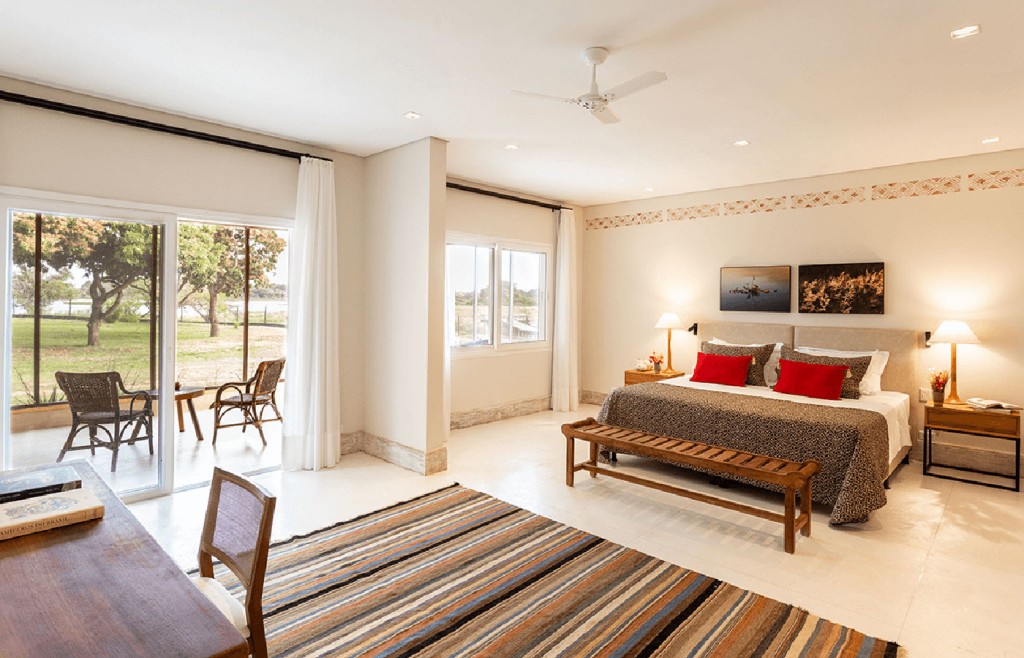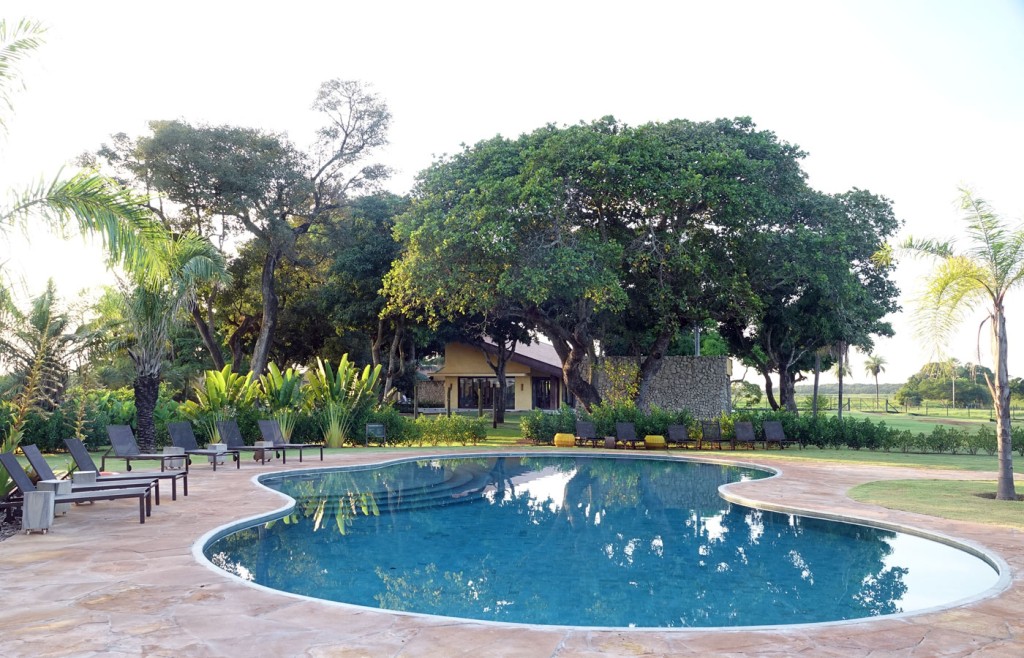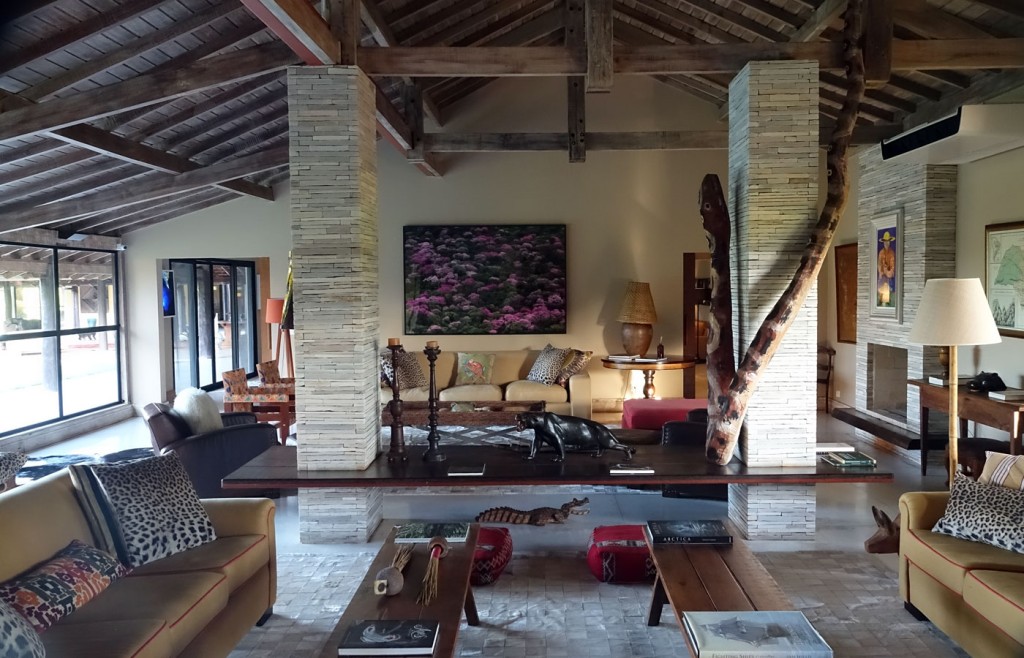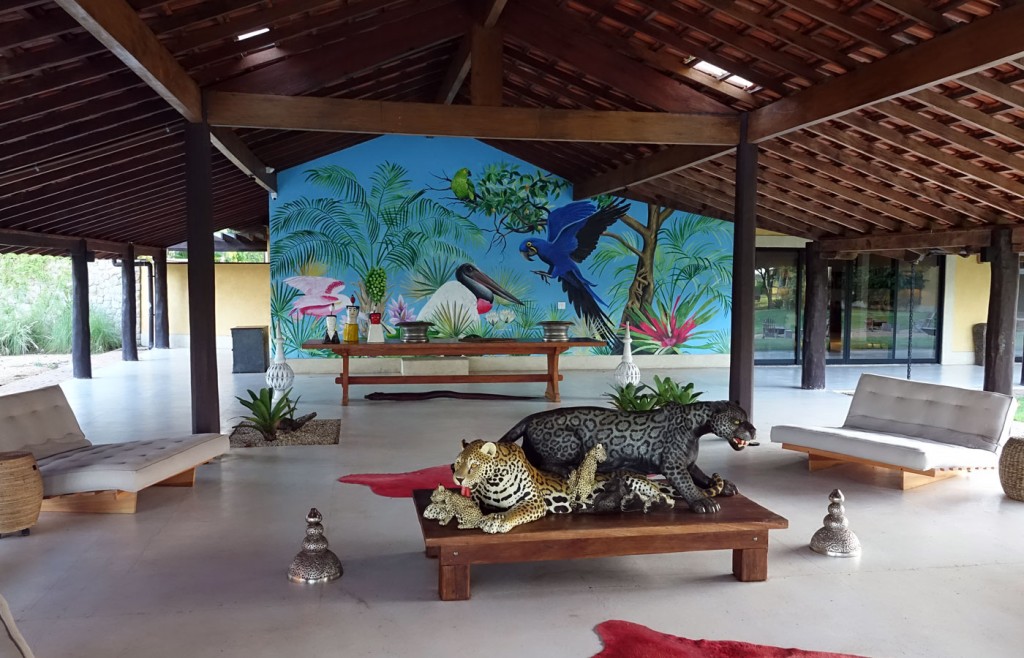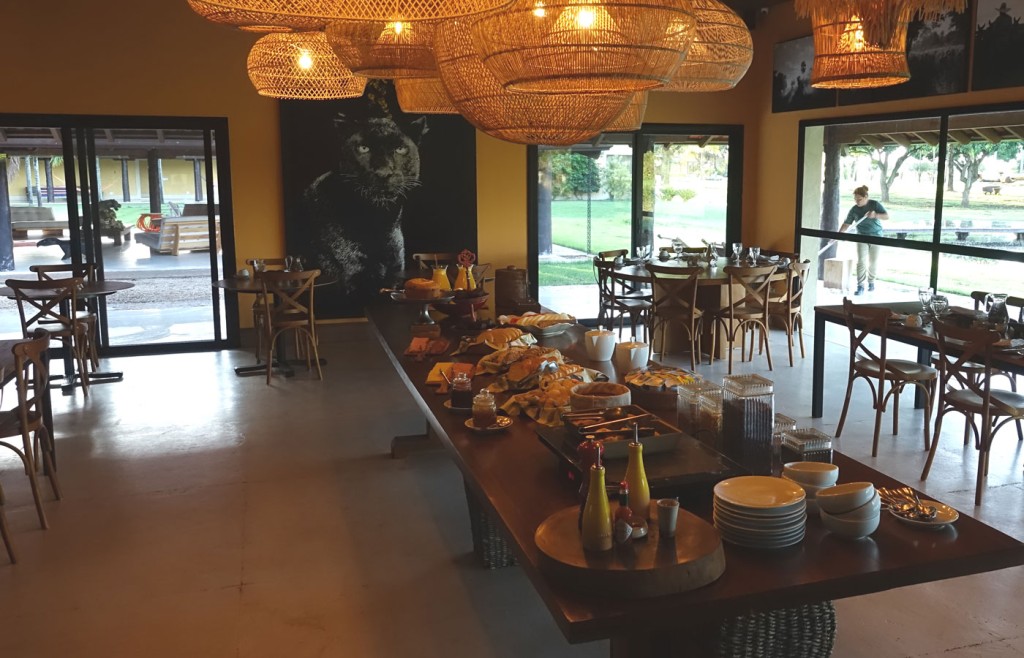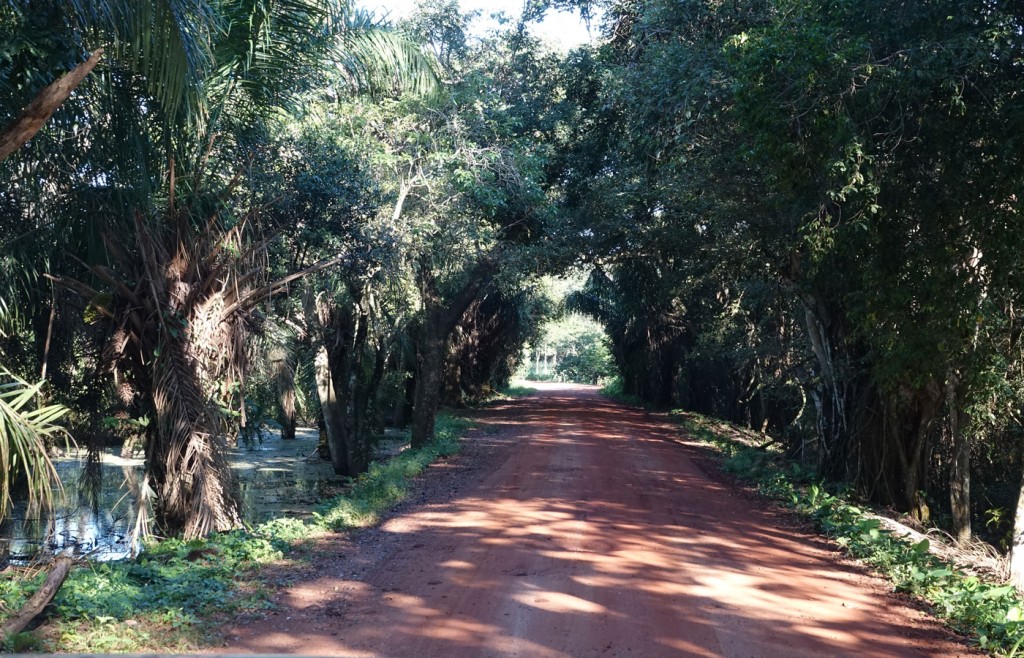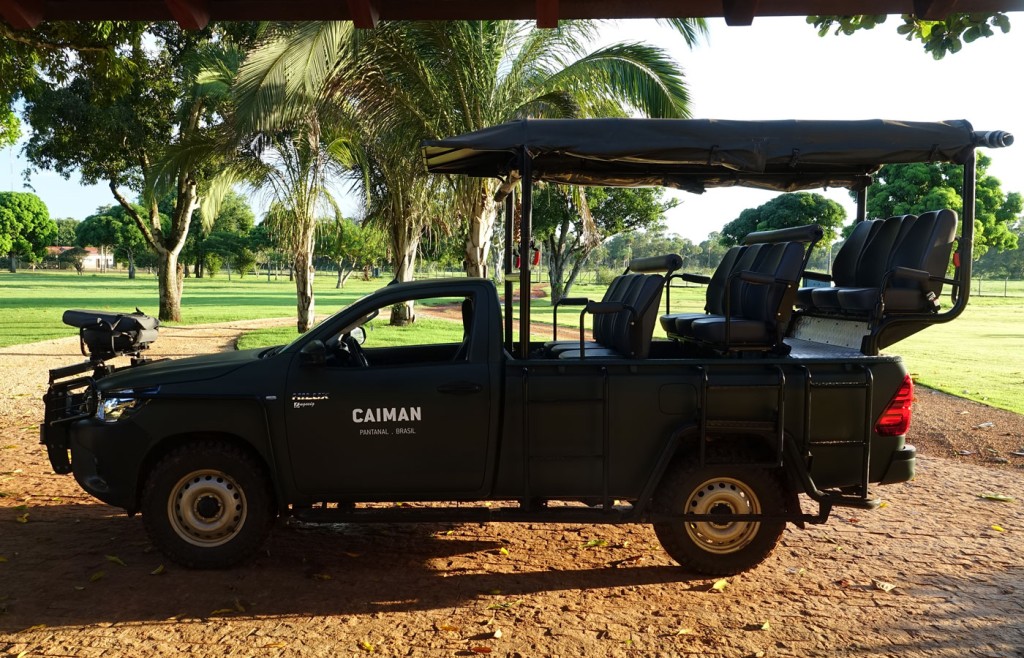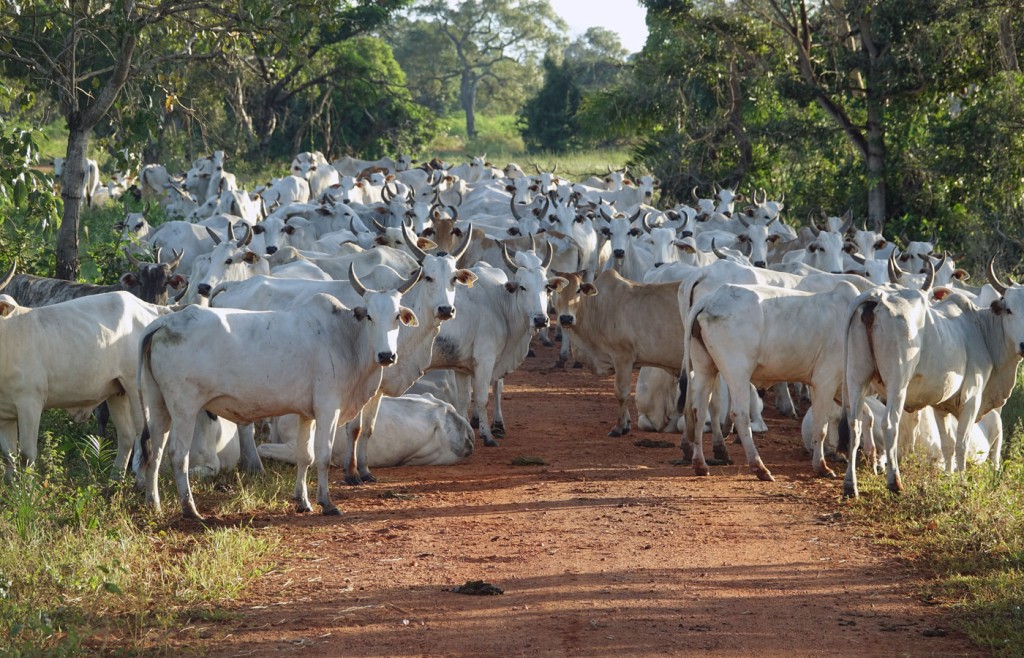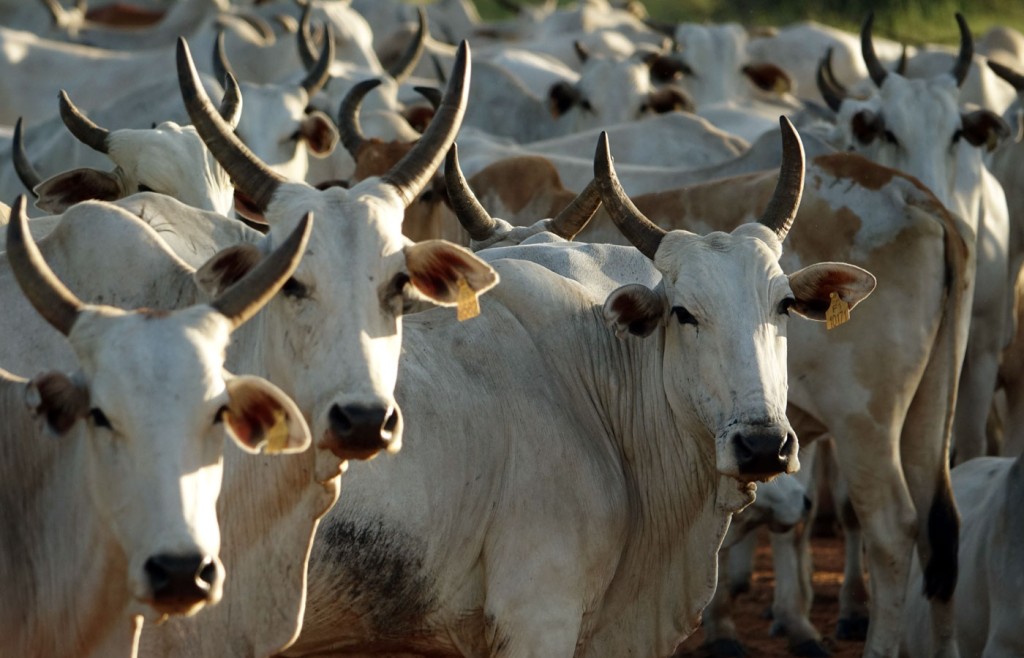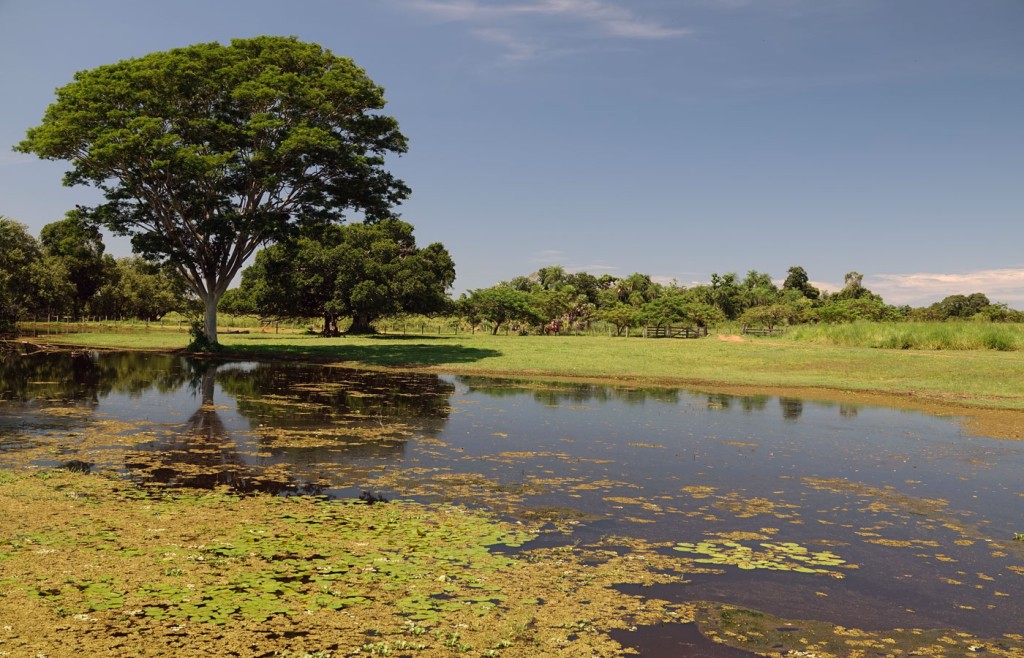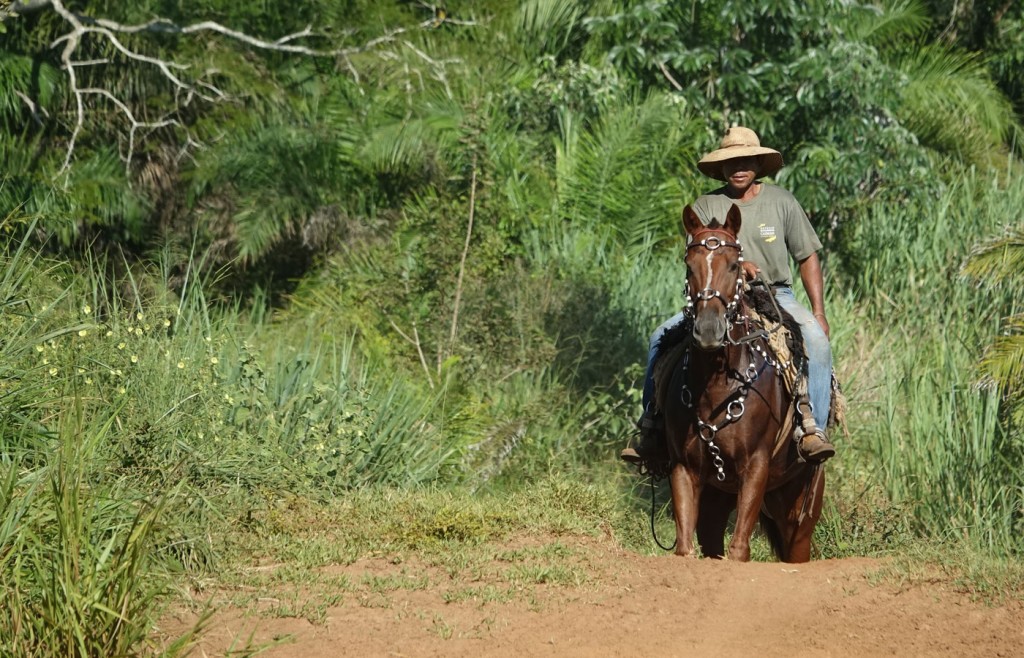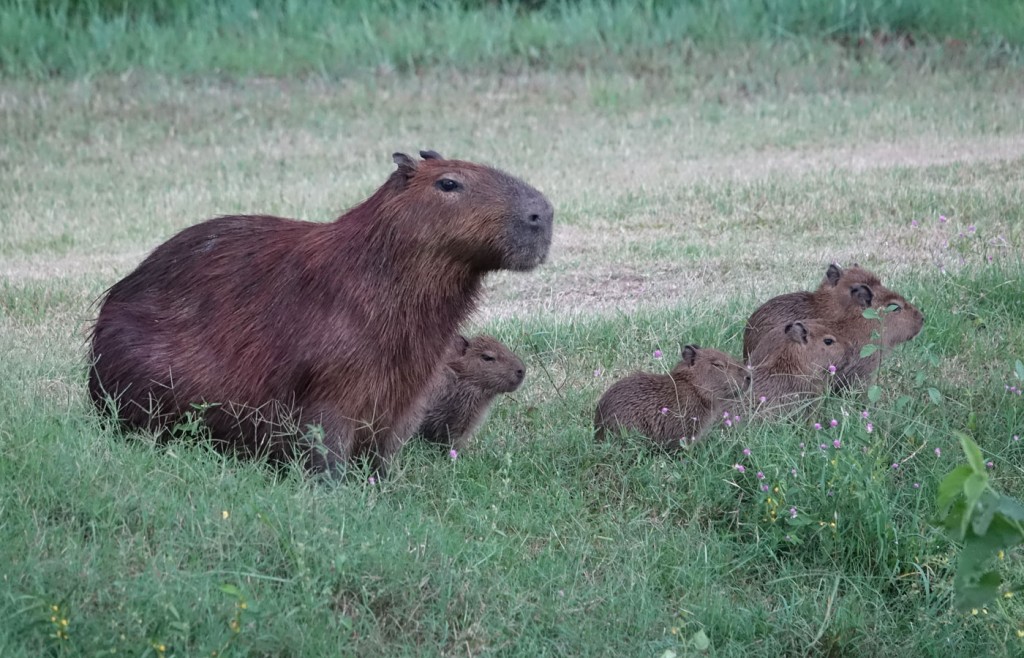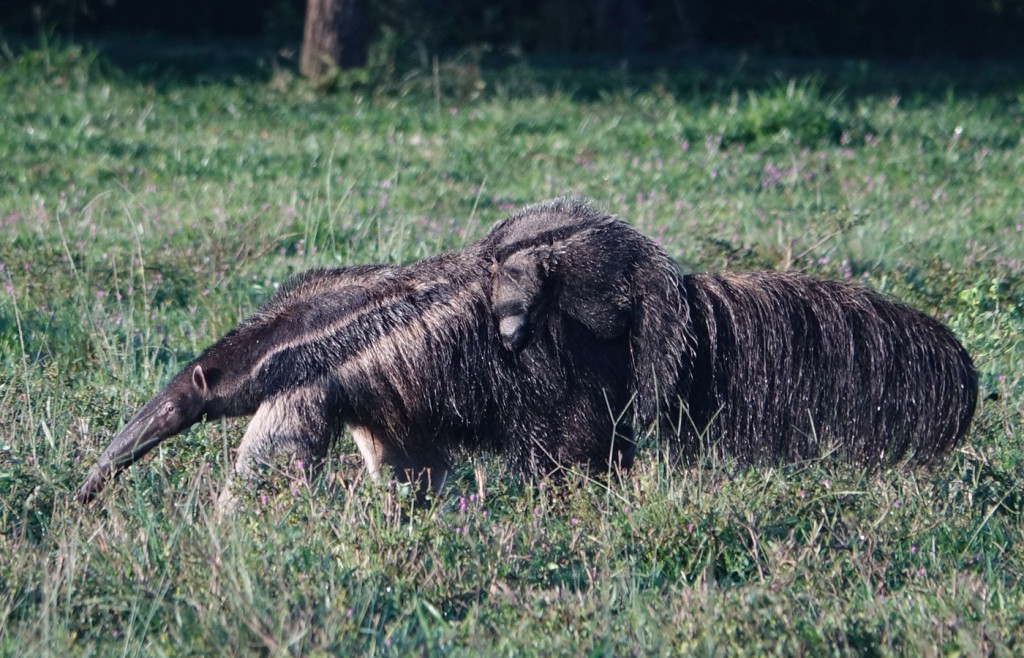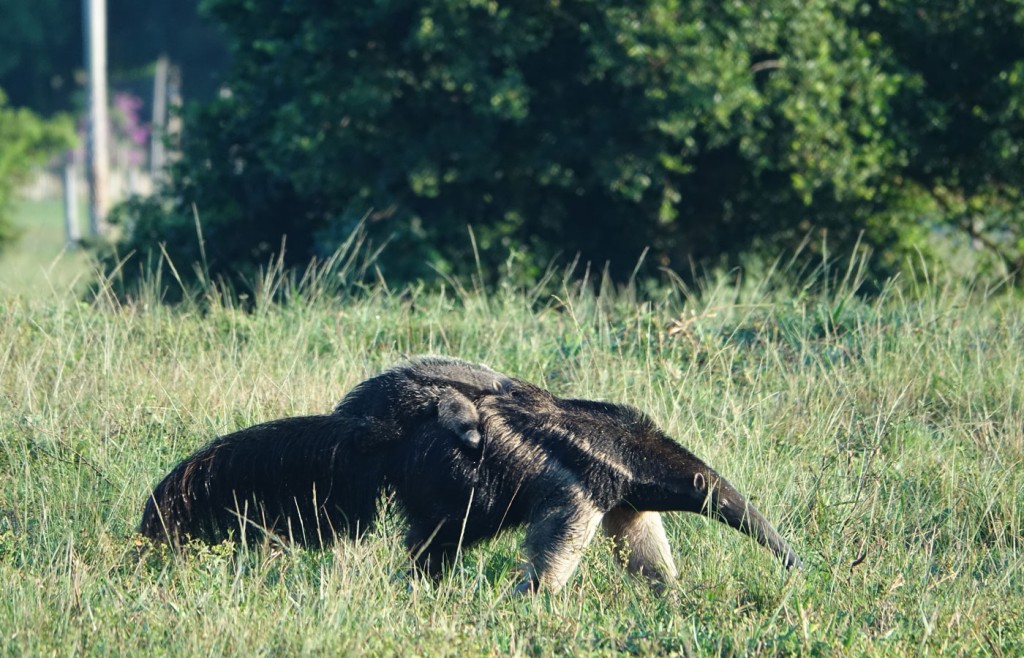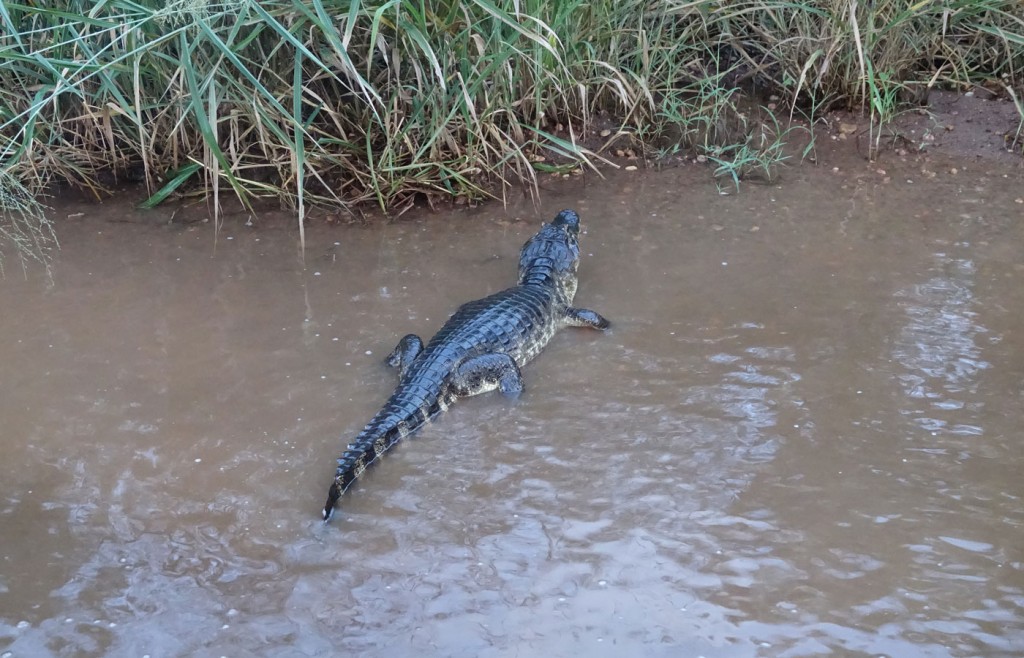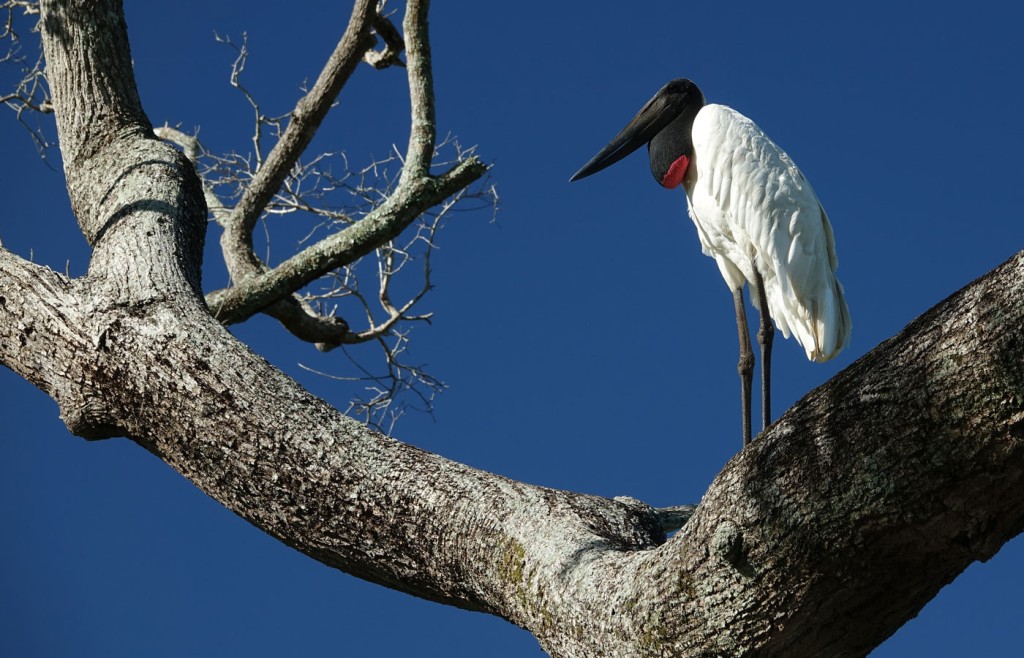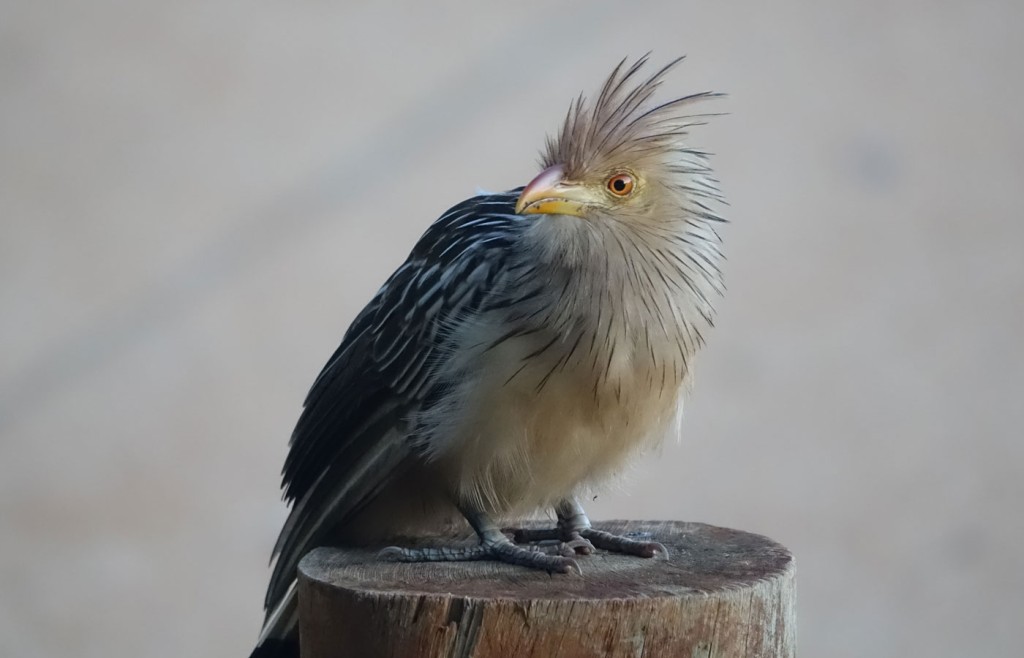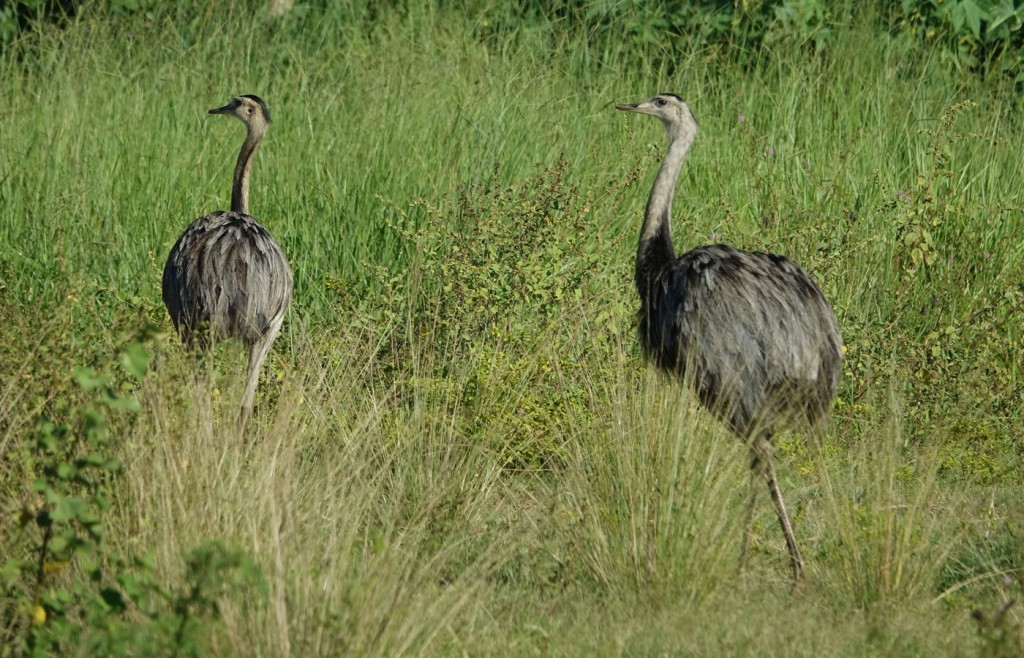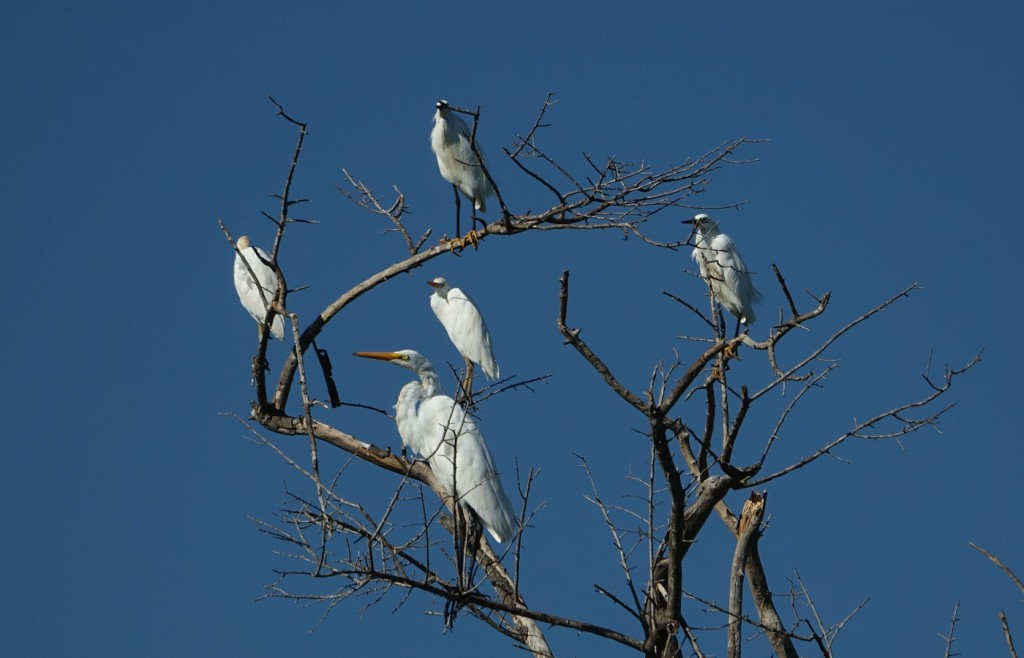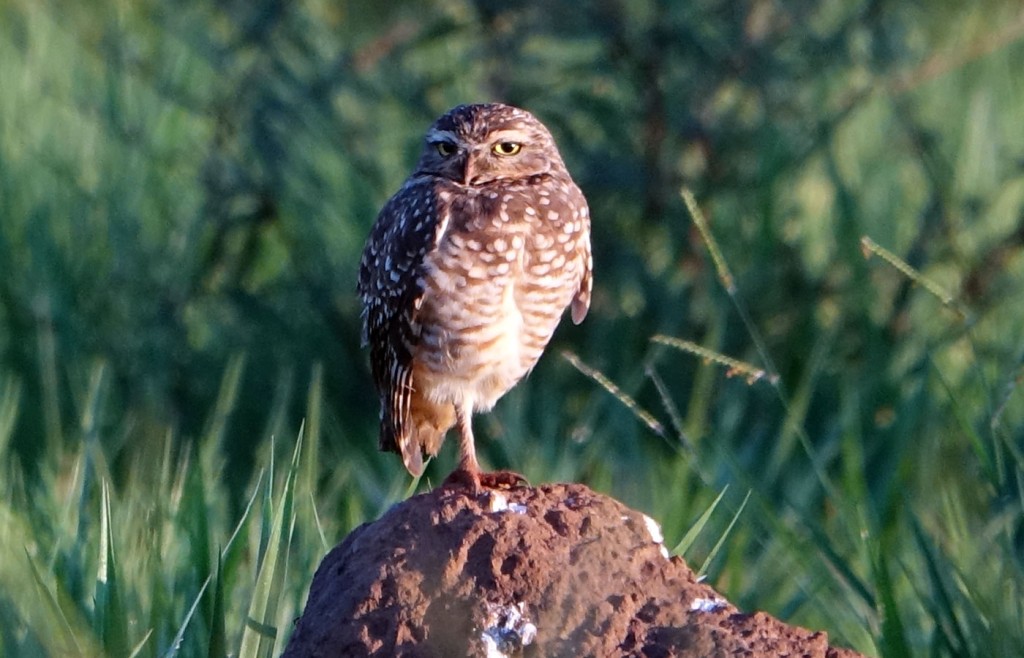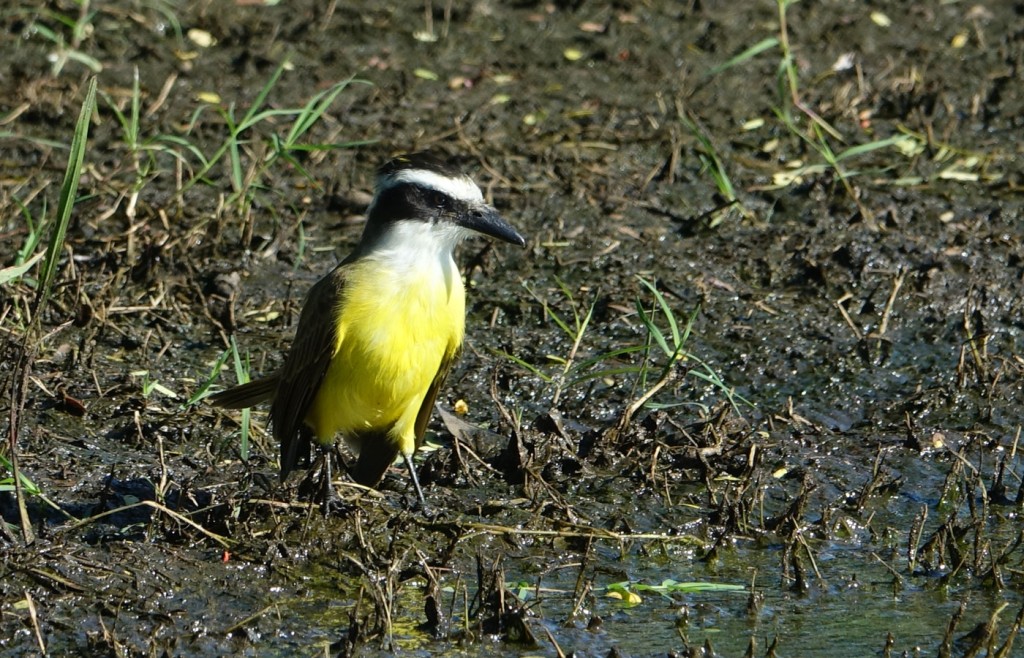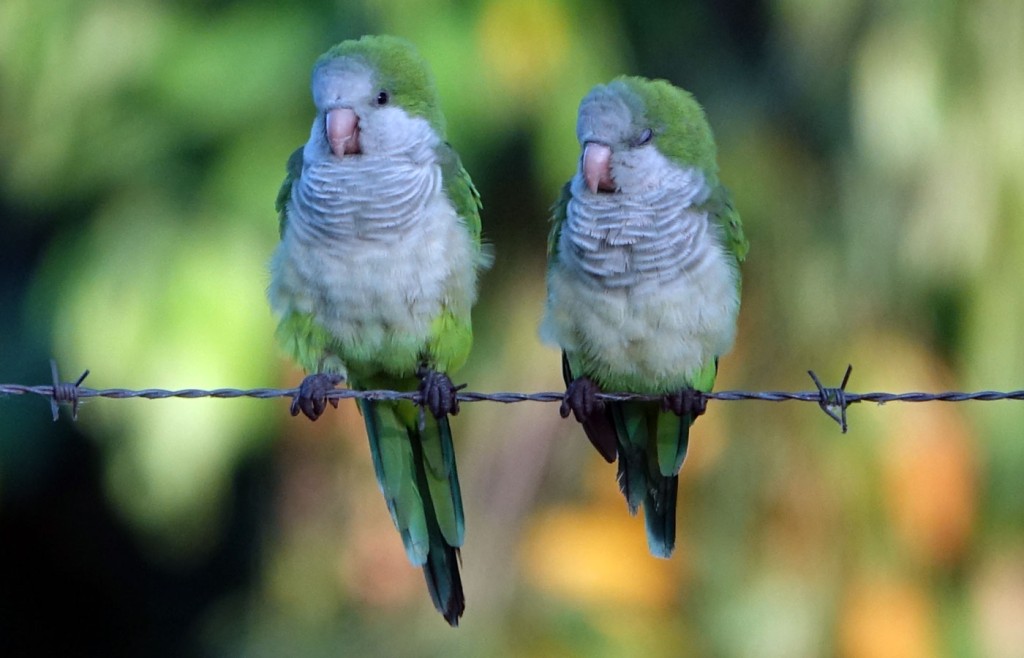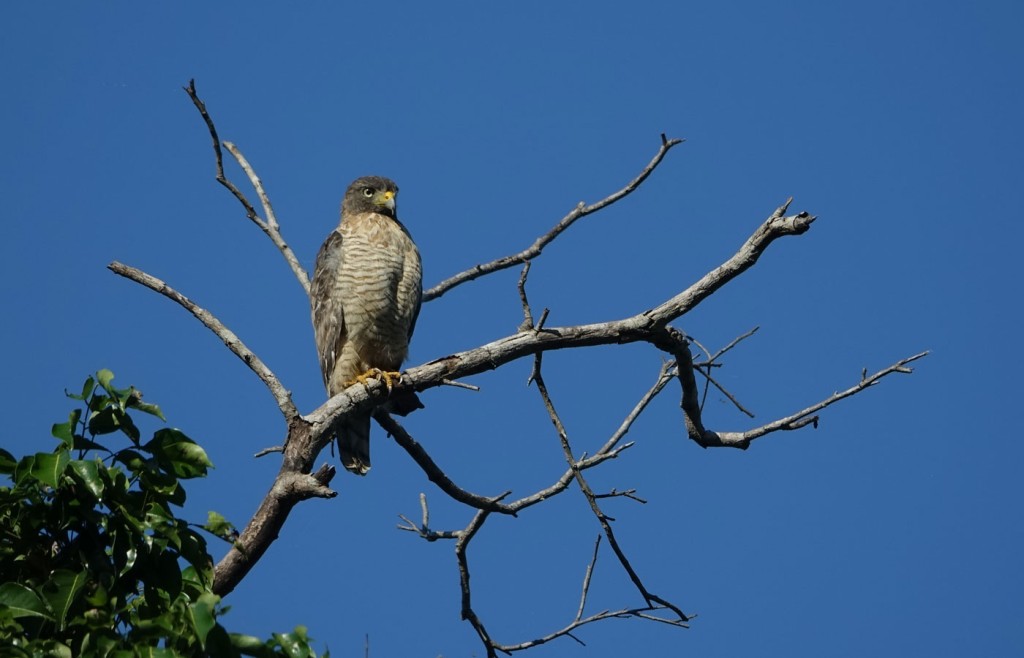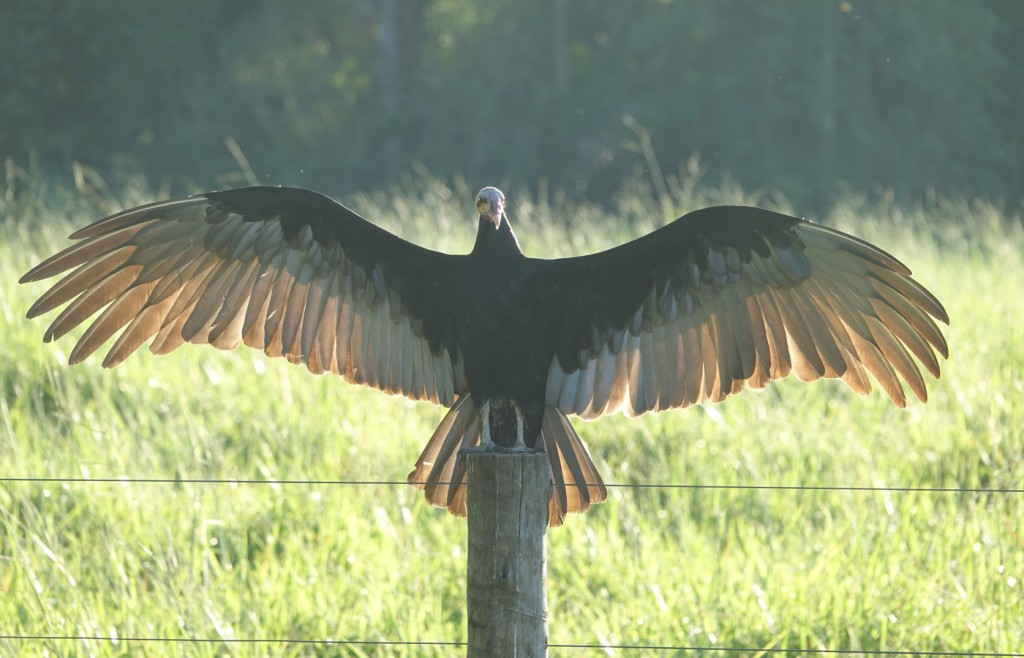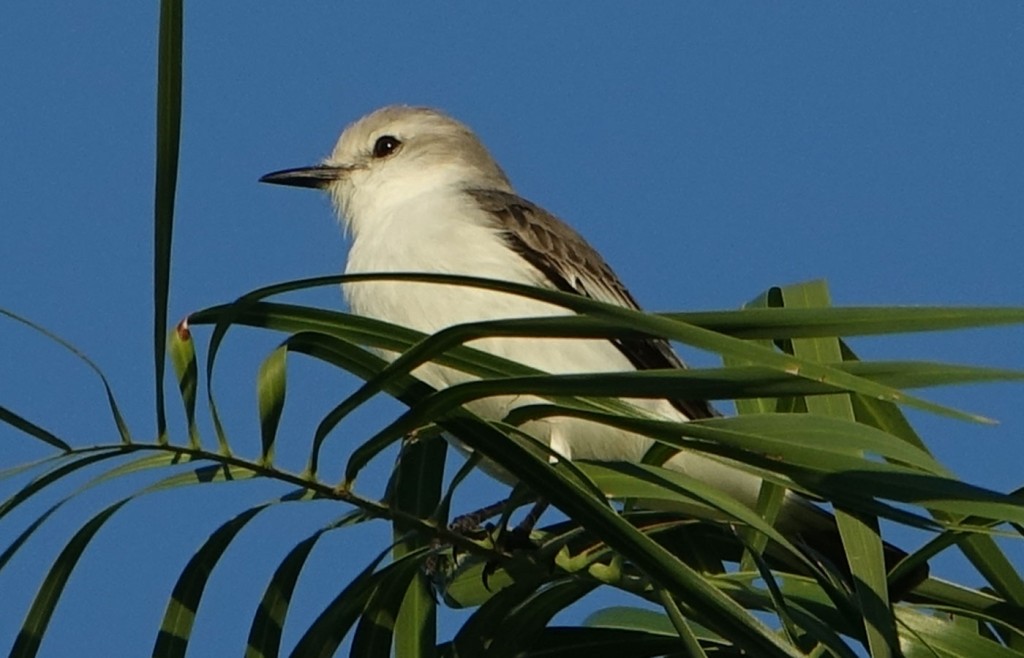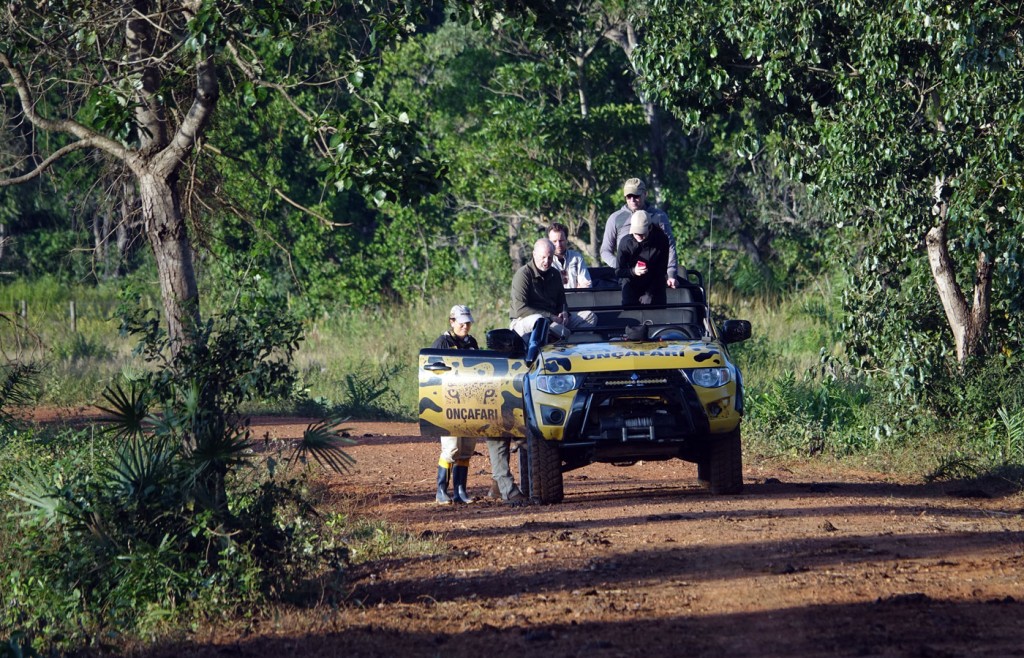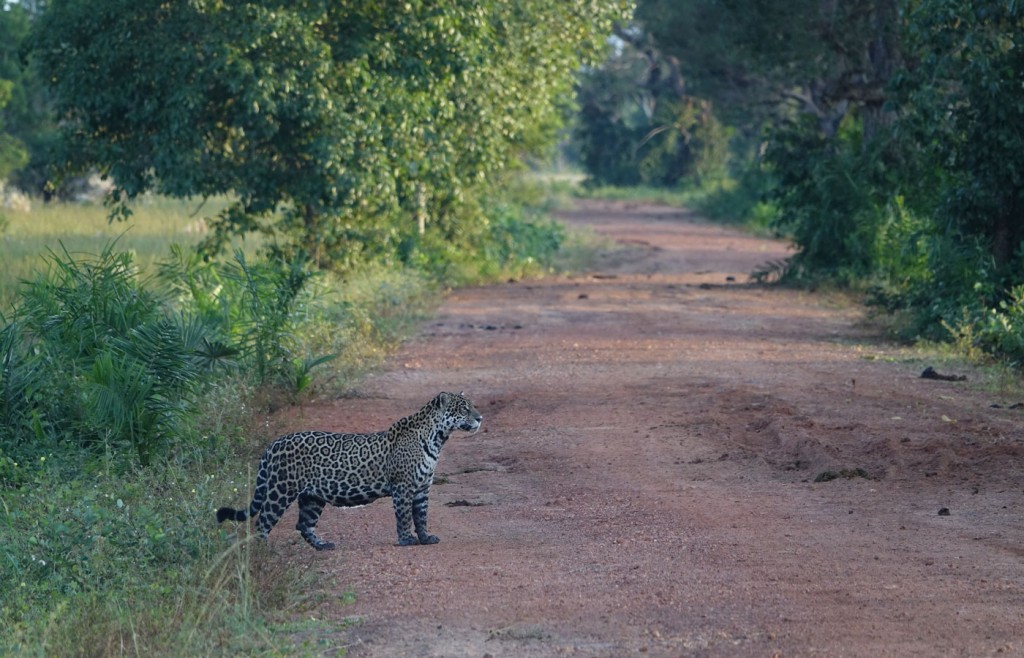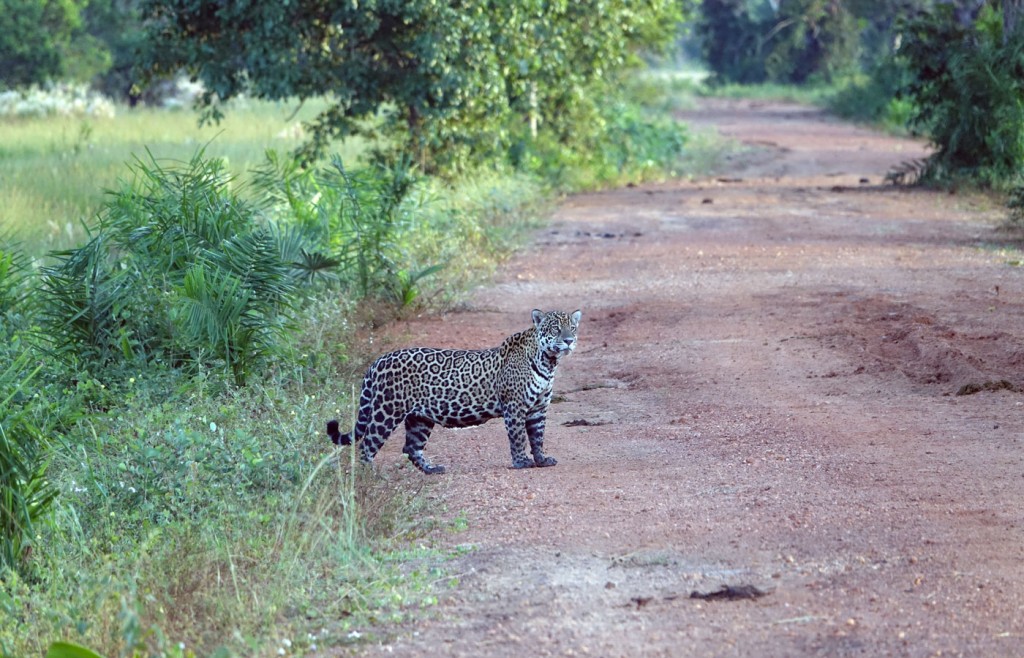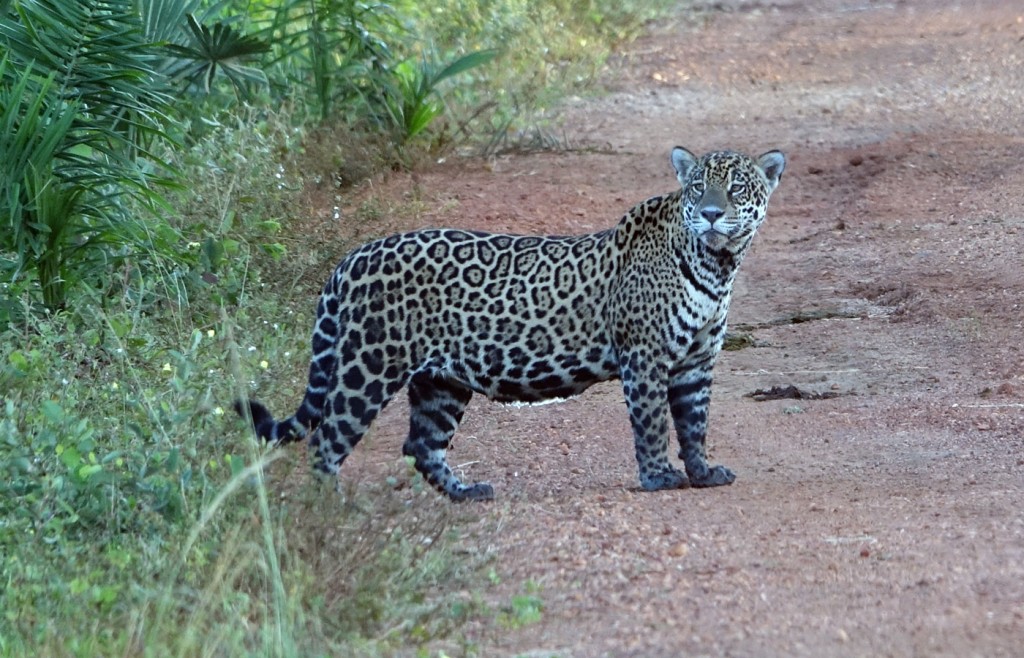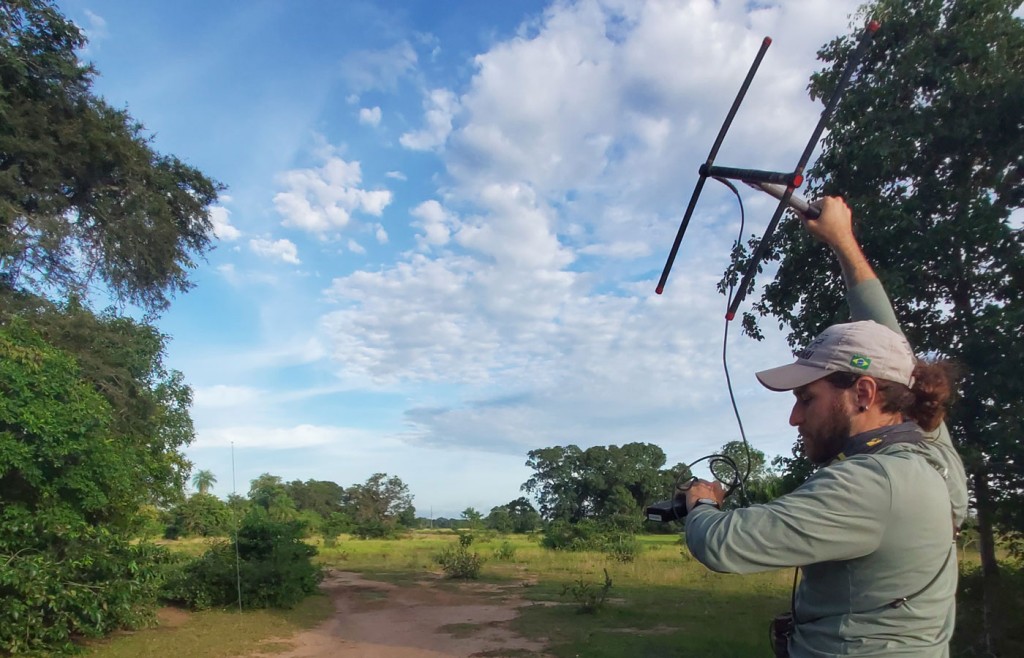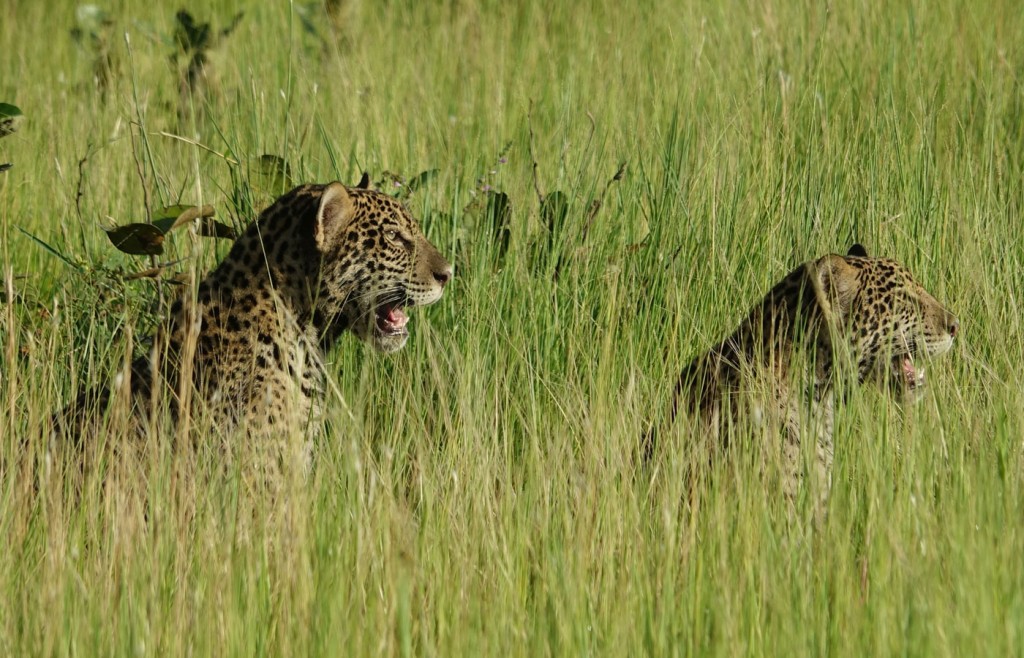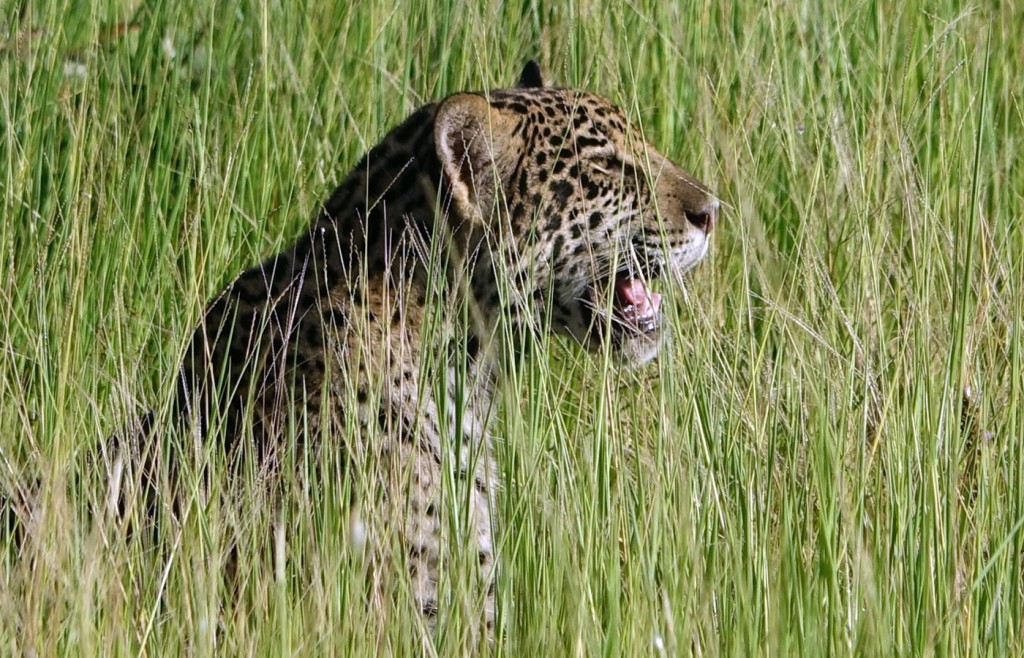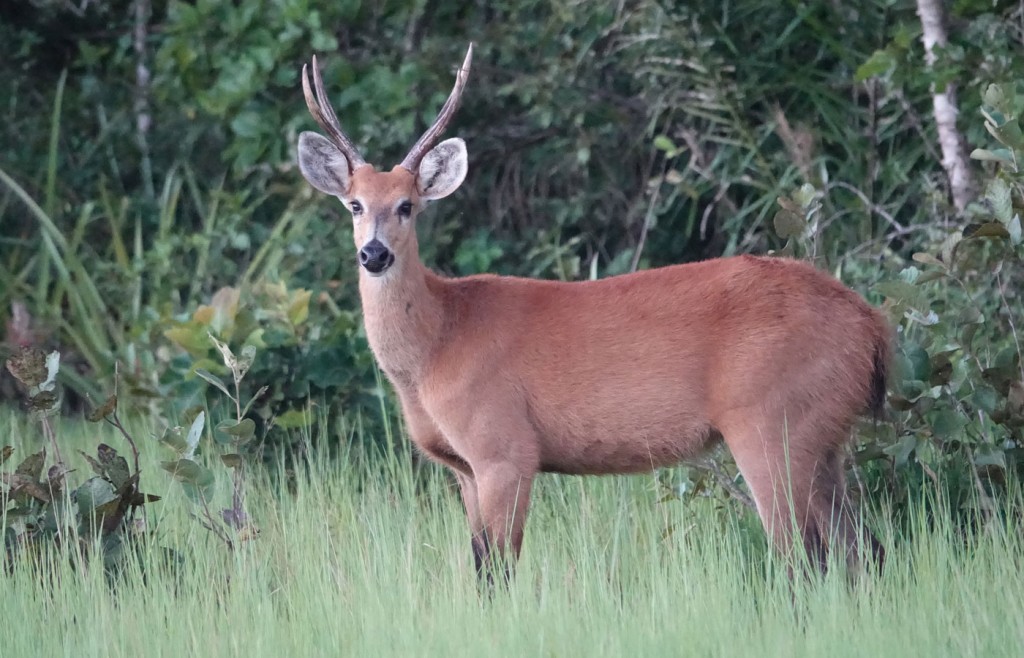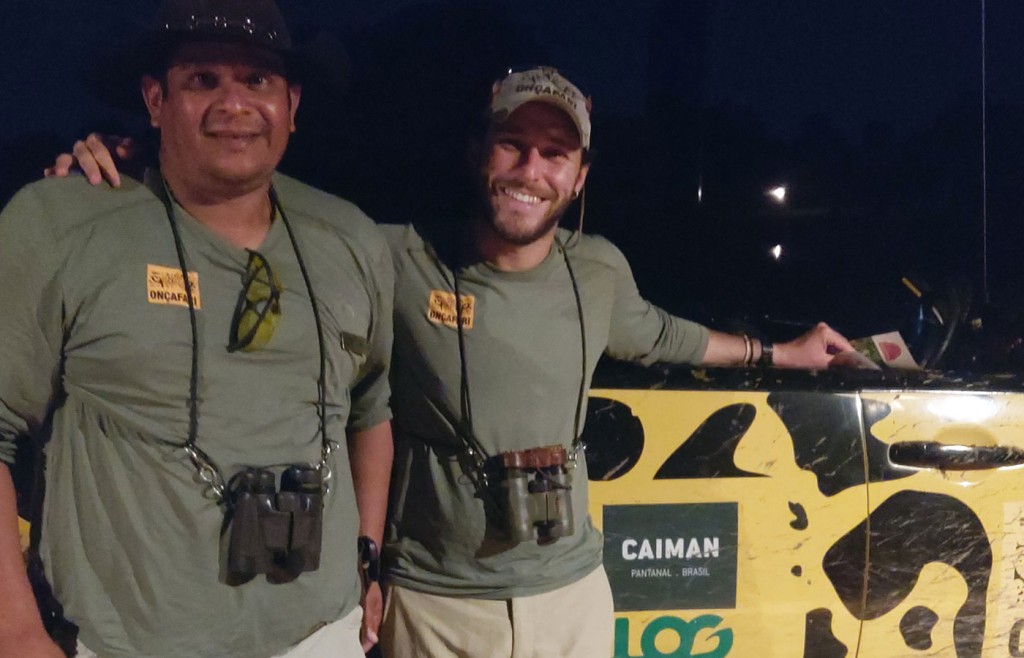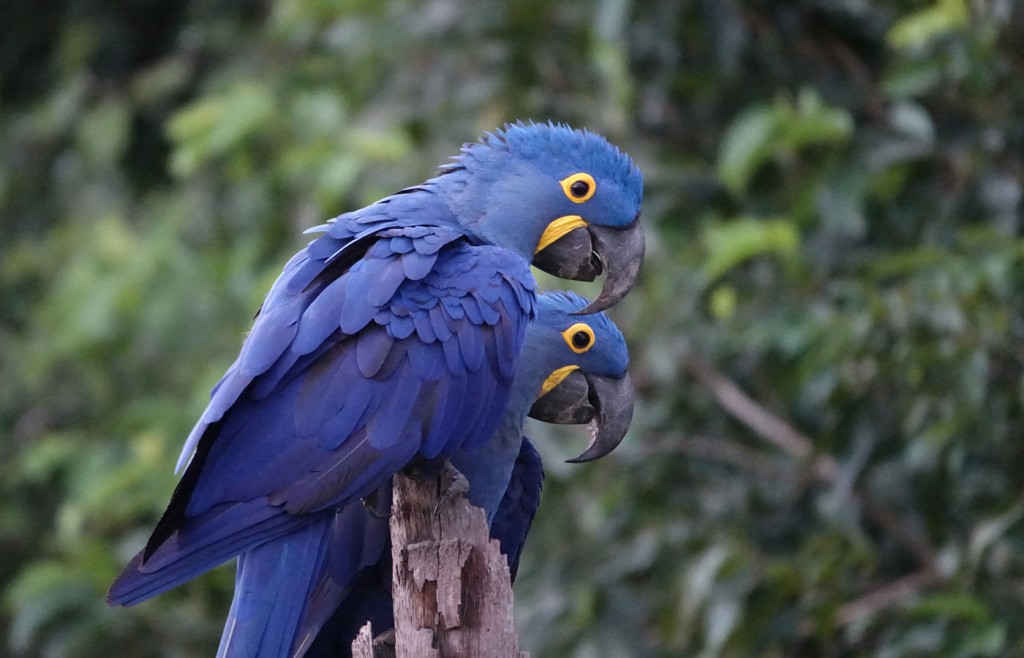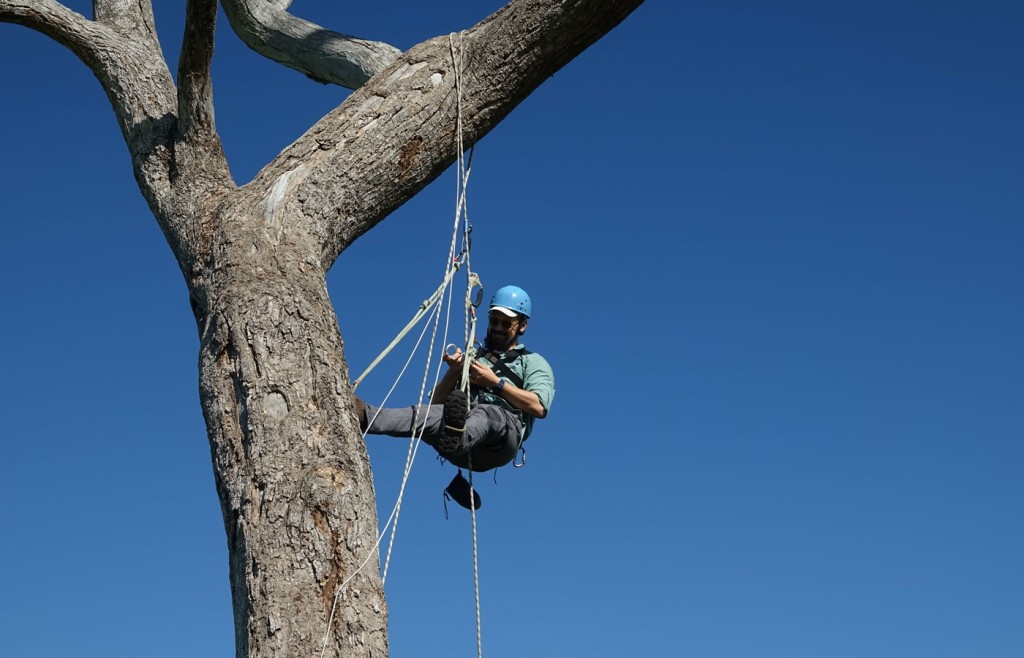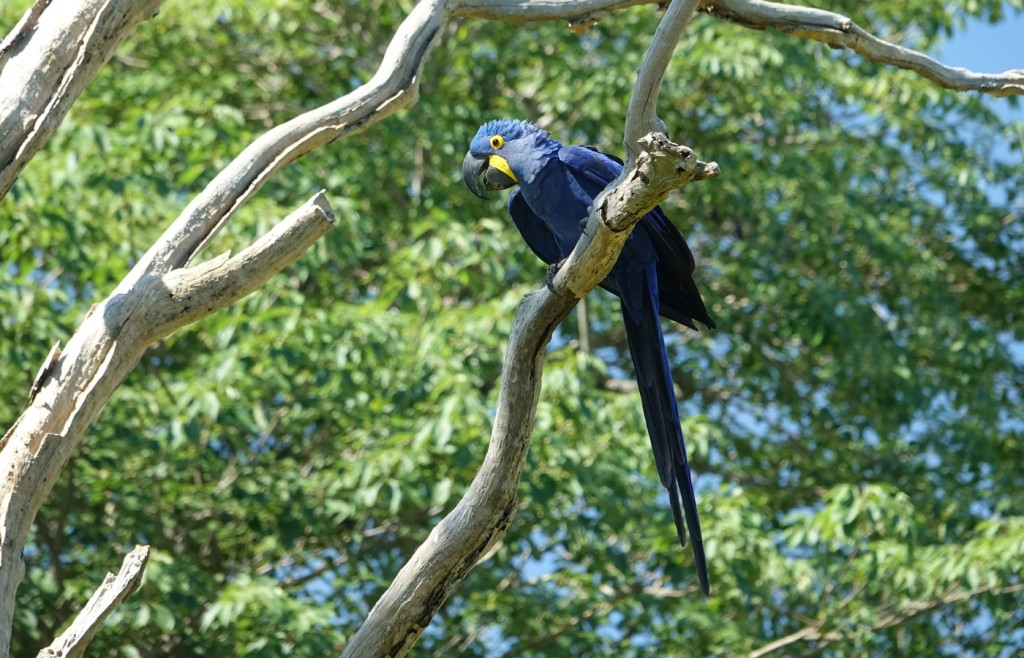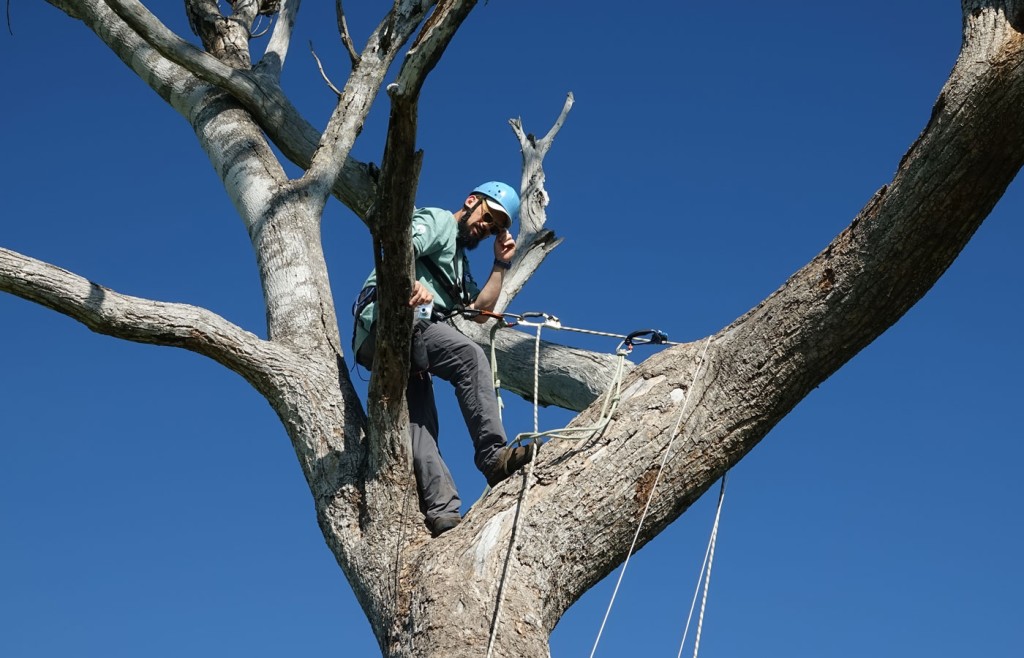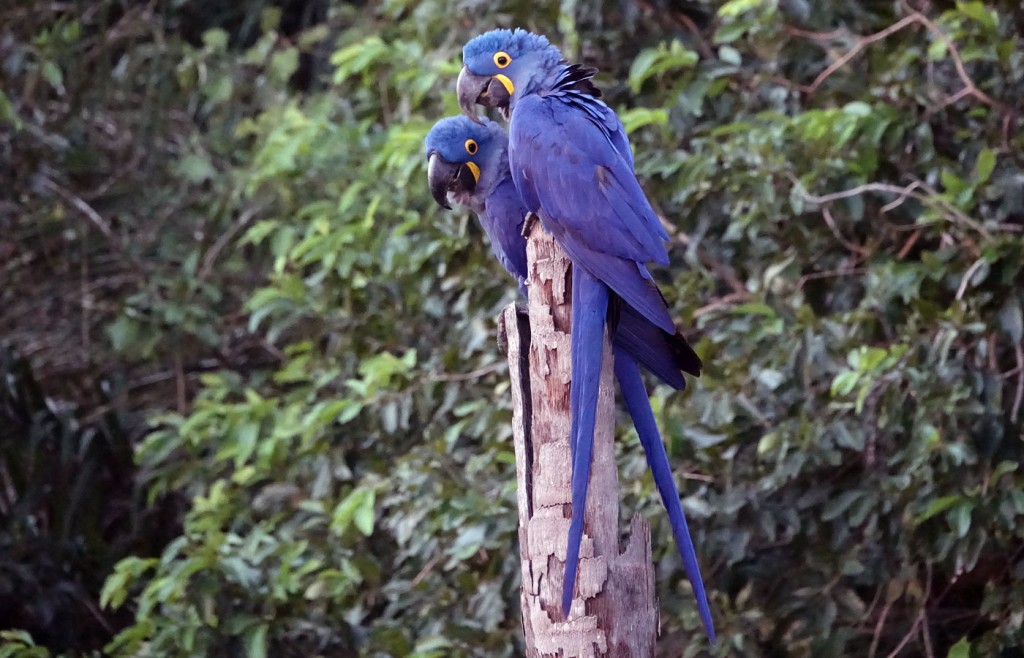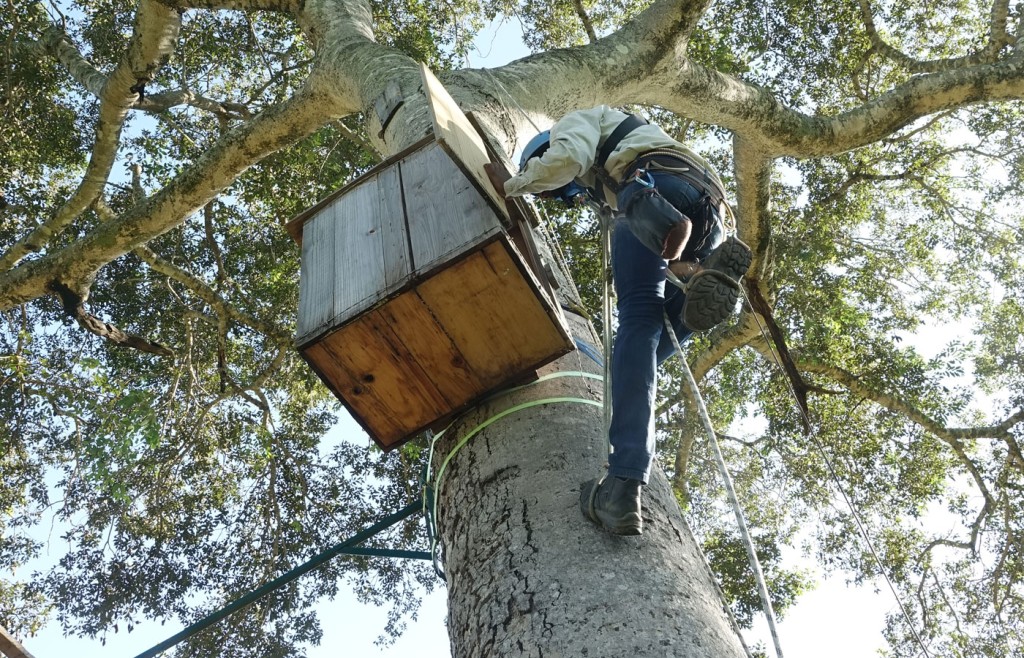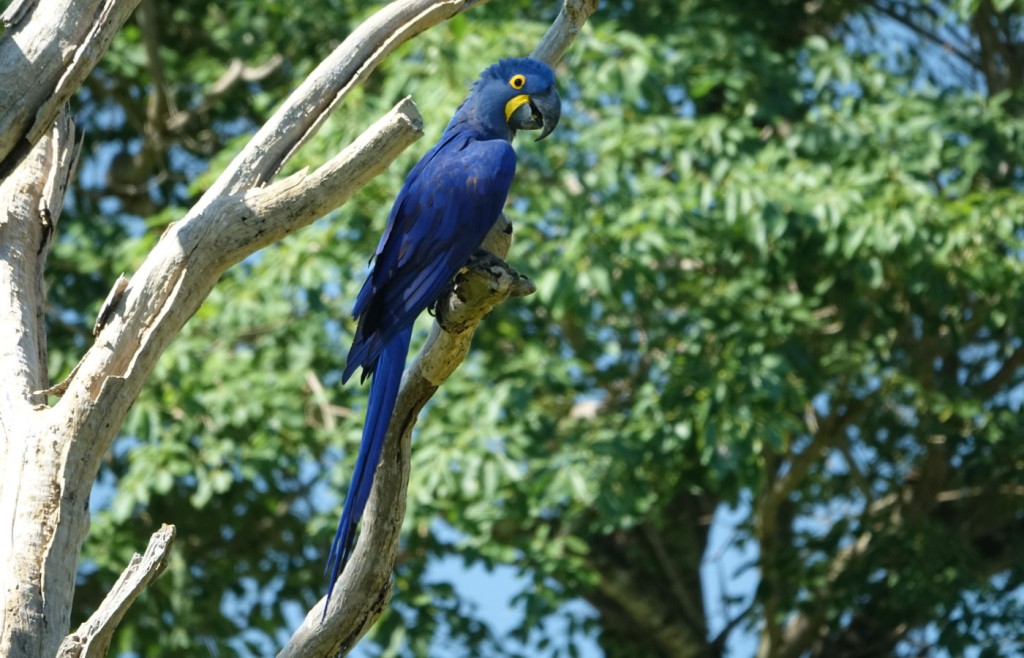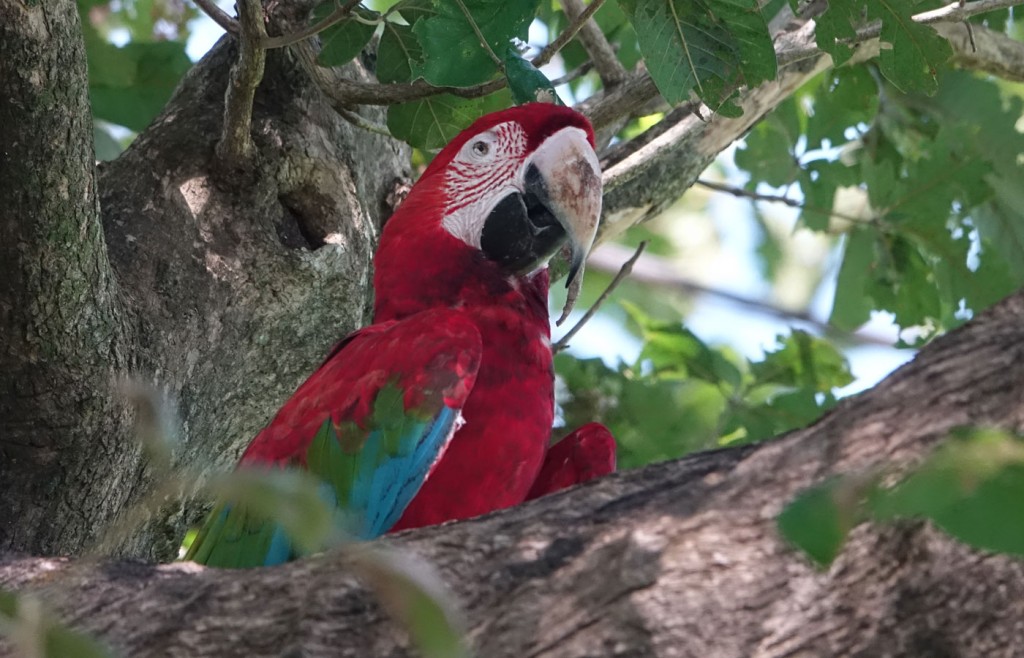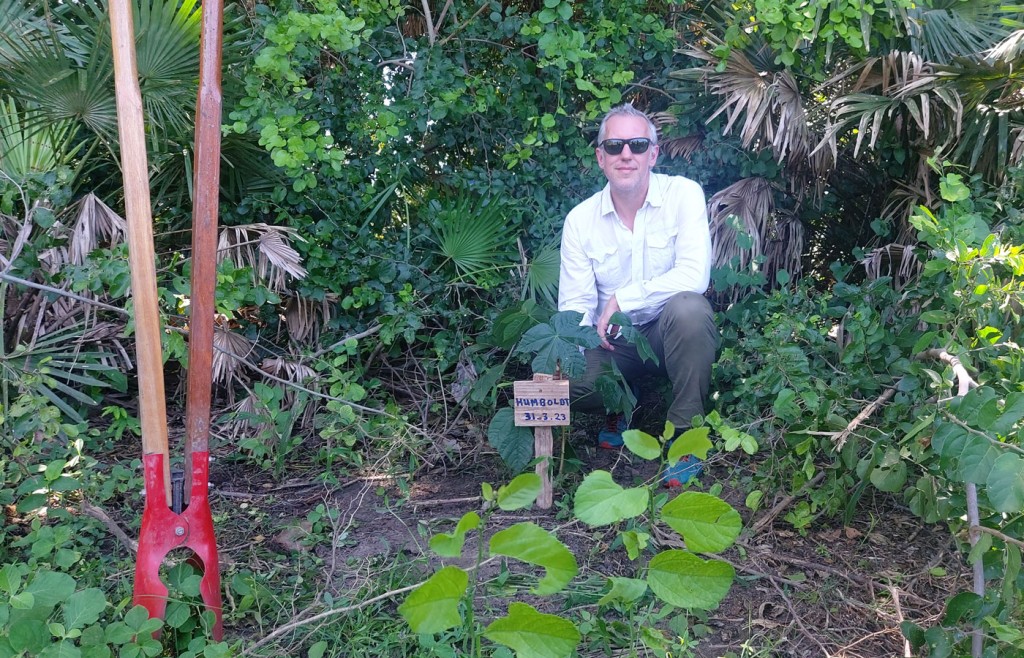Last month director Simon paid a visit to the southern Pantanal and took the chance to spend a few days at the top luxury property, Caiman Lodge.
Despite having visited the Pantanal on five separate occasions, this was his first visit to Caiman Lodge, which is our most highly recommended place to stay in the region and it certainly lived up to its reputation.
How to get to Caiman Lodge
Access to Caiman Lodge can be done via plane or via road transfer and all journeys begin in Campo Grande, the capital city of Rio Grande do Sul state. Campo Grande is a 90 minute direct flight from Sao Paulo and also has direct connections to Brasilia and Cuiaba for those looking to combine both the north and the south Pantanal. You can easily connect on to cities such as Rio de Janeiro or Iguassu Falls with a quick change of planes in Sao Paulo.
Once at Campo Grande, the transfer by road takes more or less four hours. The first three hours are on the main highway, passing some interesting scenery and there are a few decent places to stop for snacks or a comfort break. Once you reach the town of Miranda, a dirt road signposts you to Caiman Lodge which takes about an hour, depending on the season and how wet the road is. En route to Caiman Lodge Simon spotted a variety wildlife including a family of rheas, an armadillo, jabiru storks and a toco toucan perched in a tree by the road.
If you want to avoid the 4-hour road transfer then the other way to reach Caiman is by light aircraft as the lodge has it’s own landing strip. It’s a great way to arrive as it offers wonderful views over the floodplain below.
The lodges
Guests stay in one of two lodges at Caiman. The main lodge, Casa Caiman is where the bulk of visitors stay. Casa Caiman has 18 rooms broken down into 3 room categories and this is a true oasis of tranquillity in the vastness of the property. A little further from the Casa Caiman there is also a separate 6-bedroom lodge, which operates as a private villa: Baiazinha.
Casa Caiman is a wonderful place to stay. The rooms are split into two sections, separated by the pool garden areas. The entry level suite room is 45sqm so a great size and comes complete with a king size bed, air-conditioning and fan. Drinking water in the room is constantly replenished and you are provided with your own water bottle to take out on excursions in their aim to be sustainable wherever possible. A nightly turn down service is offered while you’re enjoying dinner. The superior suites and the master suites offer more space with a balcony and mini bar with the master suites also providing a separate living space complete with TV. The best viewing is down from your window though where you’ll spot pairs of blue macaws flying past. Wi-Fi is also available in all the rooms and social areas.
The social areas consist of a large living room decorated with resplendent works of art from the local region and extensive reading materials on the Pantanal and other areas of Brazil. The bar attached serves a variety of classic and Brazilian cocktails. Outside the living room is a deck overlooking the bay and there are various firepits and seated areas for you to enjoy the evenings outside with a drink in hand as you admire the nocturnal sounds and the impressive clear night sky.
The restaurant caters for breakfast, lunch and dinner and all your meals are included. Breakfast can be taken anytime between 6am and 9:30am while additional coffees and snacks are available for those heading out before that time on a morning safari. All meals are on a buffet basis. In between meals coffee and cake is available for those who remain peckish.
The outdoor pool is a good size for anyone who wants to swim or sunbathe in the often searing heat of the Pantanal and neighbours the sauna with views towards the wetlands. For those who want to workout, there is a small but well equipped gym in the middle of the garden area where various birdlife can be found.
What activities are on offer at Caiman Lodge?
People come to the Pantanal, not for the accommodation, but for the wildlife and Caiman does not disappoint on this front.
Activities at the lodge are offered twice daily, in the early morning and the late afternoon, avoiding the heat of the midday Pantanal sun. These take the form of safaris in open top 4×4 vehicles as you search the private reserve at Caiman Lodge in search of wildlife when it’s most active. The tours are operated in small groups with other guests from the lodge and led by an experienced guide and driver.
For many people the ultimate aim on a visit to the Pantanal is to see jaguars and the regular safaris work in tandem with the Onçafari team so if they sight a jaguar, they will call it in for any nearby vehicles to come and visit.
Simon was lucky enough to see a number of jaguars which is ordinarily very difficult to do in March due to the amount of water in the region plus a variety of other animals including the giant anteater with child, the marsh deer, lots of peccaries and a family of capybabra, to name but a few. Many caiman too, of course. Other guests he met had encountered a tapir (which are very hard to see) and even an anaconda on the side of the road.
Some animals you are unlikely to see in this portion of the southern Pantanal, such as giant otters or the Harpy Eagle but the wealth of wildlife on offer at Caiman was astonishing.
There are various hiking trails which can be followed with your guide or take a Canadian canoe through the floodplains and paddle leisurely to enjoy the beautiful, colourful sunset and unforgettable scenery.
Additional activities such as bird watching with specific guides or horse back riding can be arranged with additional cost.
The Pantanal is a main area for cattle farming in Brazil so you’ll encounter thousands of cows as you drive around the property. You can have the chance to visit the stables where the Pantaneiros (cowboys) keep their horses and learn about their lifestyle.
Onçafari
The Onçafari Association was established to promote the conservation of the environment and to contribute to the socioeconomic development of the Pantanal through ecotourism and scientific studies. It works to preserve biodiversity with an emphasis on jaguars at Caiman Lodge.
Onçafari is a clever play on words, combining the words Onça (Jaguar is called an Onça Pintada in Portuguse) and Safari. It’s Humboldt’s recognised charity partner in Brazil meaning that for every client who travels to Brazil, we donate money to support this fabulous project.
We include a whole day with the Onçafari team in all of our itineraries which include Caiman Lodge but you can chose to stay with the team for the entirety of your stay. This needs to be booked in advance as there are only a certain number of the safari vehicles on offer so particularly important in the high season.
Simon spent the day with his excellent guide Pedro and driver Chipa.
Simon’s day started early with a 5:30am departure from Caiman Lodge where we boarded one of the Onçafari’s branded 4x4s. Another member of the Onçafari team was already out and about on the property, tracking jaguars and one had already been sighted on the road not too far from the lodge.
There are an estimated 80 jaguars in and around the Caiman property and of these, 4 of them have collars with a tracking device attached. It enables the Onçafari team to use a UHF radio frequency signal to get an approximate location on each of the cats which makes sightings far more guaranteed. Most importantly it enables to the Onçafari team to monitor and track the life of the jaguars, the extent of their roaming habitat and their family.
The first jaguar Simon spotted was slowly tracking a large group of cows as they walked along the road, stealthily keeping in the flooded fields and behind bushes to avoid detection. Sadly for the jaguar, the cows caught sight of her and bolted down the road and the chase was over.
The team continued to drive in search for jaguars, regularly deploying the UHF aerial to try and locate a collared jaguar. As a signal was found, the team set off to find a big cat. The UHF signal enables the guides to triangulate where the jaguars can be found enabling Simon and the team to whizz through the flooded fields to where a jaguar and her two cubs had brought down a cow.
Incredibly, a fourth jaguar arrived on the scene tracking more cows and pushing them towards the mother and the cubs. Simon was hopefully of a national geographic spectacle as all four cats attacked the group of cows but alas the fourth jaguar caught the scent of the three other jaguars and decided to leave the scene.
The UHF signal picked up a fifth jaguar close by however despite extensive searching, the team were unable to find it due to the flooded state of the Pantanal and the thick undergrowth.
The Onçafari team take guests back for a late breakfast and the middle of the day is then free until activities resume at around 3:30pm.
Simon was taken to the Onçafari HQ to watch a presentation on their work and also meet a biologist who is looking to launch a similar project to track tapirs, arguably an even more challenging animal to see than the jaguar. It’ll be an exciting new addition to the work done at Caiman Lodge.
After the presentation Simon, Pedro and Chipa headed back to the site of where the mother and cubs had killed the cow, hopeful for some early evening activity. With Chipa driving skilfully through the flooded fields and with the sun setting, the jaguars did not disappoint. The family of jaguars were happily feasting on the carcass of the cow and the family incredibly gave way to enable a fourth jaguar join in for food, which is a very rare event. It was a quite spectacular sight albeit somewhat of a war of attrition against over a billion mosquitoes due to it being the flooded season. Simon insists the bits were worth it!
It was an incredible way to end the day with the Onçafari team and spending a day with the team is highly recommended.
Hyacinth Macaw Institute
Simon was also lucky enough to spend a morning with Fernanda from the Instituto Arara Azul (Hyacinth Macaw Institute). The Institute, an NGO, was developed 30 years ago by biologist Neiva Guedes and has been developing environmental protection projects with this purpose, such as Hyacinth Macaw Project in Pantanal by maintaining viable populations of hyacinth macaws (Anodorhynchus hyacinthinus) in the wild in their natural habitat.
The morning involved spending time with a biologist from the Institute who initially provides a presentation all about their work before setting out into the surrounding fields. Every day the team visit the man made nests to check for activity of macaws. The team set up motion detector cameras to monitor the ins and outs of each nest and every month the memory cards in the cameras need replacing. This involves rigging up ropes over a high branch and climbing up the trees which they do with seamless effort.
Macaws choose to make their home inside the trunk of the Manduvi trees and during the experiences, Simon was honoured to be able to plant a Manduvi sapling on behalf of Humboldt which one day will hopefully provide a home for two mating macaws and sustain the species in some small way.
Spending a morning with the Hyacinth Macaw Institute is highly recommended on any visit to Caiman Lodge, and as with the Onçafari, all profits go to the project rather than the lodge.
When to go?
The Pantanal has roughly 4 seasons. The Dry, rainy, wet and intermediate seasons. The dry season, which runs from June to October, is generally considered the best time to visit the Pantanal, as the weather is dry and the wildlife congregates around the remaining water sources. During this time, visitors can expect to see a plethora of animals, including jaguars, giant anteaters, caimans, capybaras, and a variety of bird species.
However, if you’re interested in fishing or birdwatching, then the wetter months, which run from November to May, may be a better option. This is when the water levels rise and the fish start to spawn, attracting a variety of birds to the area.
It’s worth noting that the Pantanal is also subject to flooding during the rainy season, which can make some areas inaccessible. Therefore, it’s best to plan your trip based on your interests and the activities you want to partake in.
Simon travelled to Caiman Lodge during the flooded season following a few months of heavy rain which made for a spectacular sight and he was surprised as to how many big mammals he was able to see even at that time of the year.
Our verdict
Caiman Lodge is the stand out property in the Pantanal, both in terms of the quality of accommodation but also their environmental work to create a sustainable Pantanal, with wildlife at the heart of it.
Contact us to include a stay in your holiday in Brazil.



